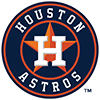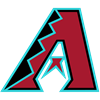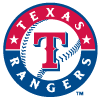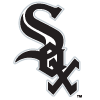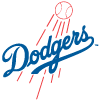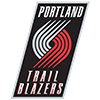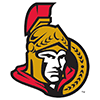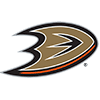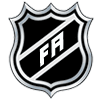Truth be told, the Mariners probably surprised even themselves last year by staying in playoff contention until the final day of the season. Also surprising was how they did it.
Contrary to expectations, the high-profile and high-priced signing of Robinson Cano didn't improve the offense much. The Mariners last year scored a mere 10 more runs than in 2013. No, the Mariners improved 16 games in the standings because of pitching.
Led by Cy Young contender Felix Hernandez, the rotation allowed the fewest runs per start (2.45) in the American League in a non-strike year since the inception of the designated hitter. (Only the 1981 Yankees (2.41) allowed fewer.) The bullpen, meanwhile, posted the fifth-lowest ERA (2.59) in the AL in the last 40 years.
So the Mariners again spent the offseason looking for bats. It took a ton of cash to lure Nelson Cruz to Seattle, but he was the quickest fix at DH for what had become the blackest of holes since Edgar Martinez retired. Since 2005, the Mariners have batted .235/.307/.363 at DH -- all lowest in the AL. Last year, Seattle's designated hitters posted a .567 OPS, lowest in the AL by 70 points. To put that into perspective, the M's DH had an OPS lower than any qualifying player in baseball (though Zack Cozart made it close at .568).
Even with an expected slide from last year's career numbers, Cruz will still fix the DH problem and strengthen the Mariners from the right side
Truth be told, the Mariners probably surprised even themselves last year by staying in playoff contention until the final day of the season. Also surprising was how they did it.
Contrary to expectations, the high-profile and high-priced signing of Robinson Cano didn't improve the offense much. The Mariners last year scored a mere 10 more runs than in 2013. No, the Mariners improved 16 games in the standings because of pitching.
Led by Cy Young contender Felix Hernandez, the rotation allowed the fewest runs per start (2.45) in the American League in a non-strike year since the inception of the designated hitter. (Only the 1981 Yankees (2.41) allowed fewer.) The bullpen, meanwhile, posted the fifth-lowest ERA (2.59) in the AL in the last 40 years.
So the Mariners again spent the offseason looking for bats. It took a ton of cash to lure Nelson Cruz to Seattle, but he was the quickest fix at DH for what had become the blackest of holes since Edgar Martinez retired. Since 2005, the Mariners have batted .235/.307/.363 at DH -- all lowest in the AL. Last year, Seattle's designated hitters posted a .567 OPS, lowest in the AL by 70 points. To put that into perspective, the M's DH had an OPS lower than any qualifying player in baseball (though Zack Cozart made it close at .568).
Even with an expected slide from last year's career numbers, Cruz will still fix the DH problem and strengthen the Mariners from the right side of the plate. That, and the addition of a Seth Smith/Justin Ruggiano platoon in the second hole, is bound to help the Mariners score more runs this year.
Will it be enough to overcome the inevitable regression in pitching? We'll see. But at least the Mariners have legitimate playoff expectations for the first time in more than a decade.
Offseason Moves
Signed DH/OF Nelson Cruz to a four-year, $57 million contract
The Mariners needed right-handed power, and it's not hard to see why they were willing to overpay for it, both in money and years -- they were second to last in baseball last season in homers and slugging percentage by right-handed batters.
Acquired OF Seth Smith from the Padres and OF Justin Ruggiano from the Cubs for RHP Brandon Maurer and RHP Matt Brazis, respectively
Smith and Ruggiano went under the radar a bit, but they could have a big impact batting second in a right-field platoon. Seattle's right-fielders last year batted .255/.307/.413; its No. 2 hitters batted .225/.260/.348. Smith is a career .277/.358/.481 vs. right-handers, while Ruggiano is a career. 266/.329/.508 vs. lefties. The duo brings stability to the outfield and promises to deliver much better than last year's AL-low .607 OPS out of the two hole, setting the table for a formidable heart of the lineup. Maurer has upside but was expendable among a packed bullpen. Brazis is a 25-year-old reliever who's never pitched above Double-A.
Traded OF Michael Saunders for LHP J.A. Happ
Happ essentially fills the Chris Young veteran rotation spot from last year. Like Young, Happ won't be asked to deliver much more than six decent innings each time out. Unlike Young, Happ isn't a smoke-and-mirrors, luck-dependent pitcher. Safeco Field should help him cut his home-run rate, though he needs to figure out his road woes after three consecutive seasons with 5.00-plus ERAs away from home. It was probably time for Saunders to move on, but the Mariners might regret cutting bait if he just stays healthy this year.
Signed 2B Rickie Weeks to a one-year, $2 million contract
The Mariners intend to use Weeks off the bench in both the infield and outfield. It's a low-risk move that gives the team added flexibility, though Weeks has never played anything other than second base. It also means the Mariners can play the loser of the shortstop competition between Brad Miller and Chris Taylor everyday at Triple-A. And they're covered if Willie Bloomquist's injured knee isn't ready for Opening Day. Weeks could also platoon in left field with Dustin Ackley, if it comes to that.
Signed 3B Kyle Seager to a seven-year, $100 million extension
After 25 homers, an All-Star nod and a Gold Glove, the Mariners quickly decided to lock up the only significant homegrown player from the Jack Zduriencik era. Seager isn't done developing, but the Mariners won't complain if he only repeats last year's numbers. The Mariners overpaid to buy out Seager's arbitration years, but when the 27-year-old hits the back half of his contract, it likely will be a bargain.
Signed LHP Joe Saunders, LHP Rafael Perez and RHP Mark Lowe to a minor-league contracts with invitations to spring training
The bullpen is well stocked, but Saunders and Perez hope to land a lefty role. Like Lowe, who's back in the Seattle organization after a four-year hiatus, they're more likely fall-back options in case injuries hit.
Signed C John Baker to a minor-league contract with an invitation to spring training
Baker will compete with Jesus Sucre to back up Mike Zunino. Baker is the better hitter, but Sucre is better defensively.
Signed OF Franklin Gutierrez to a minor-league contract with an invitation to spring training
After sitting out all last season with a gastrointestinal illness, Gutierrez is ready to resume his career. The Mariners have no expectations, and even if he has a good spring he's bound for Triple-A until he proves his body might hold up.
Did not re-sign free-agents LHP Joe Beimel, RHP Chris Young, 1B/DH Corey Hart, DH Kendrys Morales and OF Chris Denorfia; waived 1B Justin Smoak
Beimel was a nice piece last season, but the others will not be missed. The team finally cut the cord on Smoak, who never fulfilled expectations after he was acquired in the Cliff Lee deal in 2010.
Projected Lineup (vs. RHP/LHP)
1. Austin Jackson, CF
2. Seth Smith/Justin Ruggiano, RF
3. Robinson Cano, 2B
4. Nelson Cruz, DH
5. Kyle Seager, 3B
6. Logan Morrison, 1B
7. Dustin Ackley, LF
8. Mike Zunino, C
9. Brad Miller or Chris Taylor, SS
Spots 1-5 are pretty well set. The bottom half of the order could go a number of ways. Miller and Taylor will compete for the starting shortstop job (see below). Rickie Weeks could platoon with Ackley. The heart of the order is the best the Mariners have had in quite some time. Cano should see his intentional walks (20, 4th in MLB) drop with Cruz behind him. Seager should have more RBI opportunities. The Smith-Ruggiano combo might be the key to the lineup after the second spot was a zero for the Mariners last year.
Projected Rotation
1. Felix Hernandez
2. Hisashi Iwakuma
3. James Paxton
4. J.A. Happ
5. Taijuan Walker
Walker will compete with Roenis Elias and Erasmo Ramirez for the fifth spot. As long as he doesn't implode in spring, he should win the job, with the other two hanging out at Triple-A in case injuries hit. With a solid 1-2 duo, the Mariners could have one of the league's better rotations if Paxton and Walker live up to their prospect potential. The left-handed Paxton could pitch in the No. 2 spot if the Mariners want to break up the two right-handers atop the rotation.
Closer:Fernando Rodney led baseball in saves last year with a franchise-record 48 in his first season in Seattle -- and ranked 16th in ERA and 26th in WHIP among closers (min. 20 save chances). Despite putting a runner on in 34 of his 51 save opportunities, Rodney blew only three saves. Behold the "Fernando Rodney Experience," as it was dubbed. The rollercoaster never stops, but only rarely does it crash. Even if the rollercoaster stays on the tracks this season, though, Rodney is unlikely to duplicate 2014. Fifty save chances are rare, a better offense might mean fewer close games and Rodney is 38 this year.
Key Bullpen Members:Danny Farquhar, who saved 16 games in 2013, could close if Rodney goes down. Charlie Furbush and Lucas Luetge are the two lefties, though the latter needs better control to hold onto the job. If the Mariners go with one lefty in Furbush, 6-foot-6 right-hander Carson Smith could fill the last spot in the bullpen. Dominic Leone is a hard-throwing right-hander to keep an eye on. Even if the bullpen regresses a bit this season (see blow), it should still be one of the best in baseball.
Notes of Import, Fantasy or Otherwise
How much power will Nelson Cruz lose moving to Seattle?
Cruz won't repeat 40 home runs moving to Safeco Field, but the Mariners will no doubt take anything over 30 as gravy. Hitting even 30, though, could be a challenge. Cruz goes from Camden Yards, which plays to right-handed power, to Safeco Field, which suppresses right-handed power. In 204 career plate appearances at Safeco he's batted .234/.309/.440, and even though all but one of his homers last year had the distance to clear the Safeco fence, Seattle's infamous marine layer likely will knock down some of those flyballs. It's a similar story on the road as Cruz replaces the AL East's hitter-friendly parks with the more pitcher-friendly AL West, at least in Anaheim and Oakland. Of Cruz's MLB-leading 25 road homers last year, 10 came in 37 games vs. the AL East. (In 13 games vs. the AL West's non-Seattle teams, he homered twice -- none at Anaheim nor Oakland.) Bottom line, like the Mariners, fantasy owners need to manage expectations, i.e., draft for 25 homers, not 40.
Is the Jack Zduriencik rebuild FINALLY paying off?
Call it rebuild 2.0. General manager Jack Zduriencik took a detour from his original rebuilding plan to get to playoff contention. Zduriencik's plan when he arrived was to build from within, to restock the farm system and to acquire talent through the draft rather than spending wildly in free agency -- to "play the kids," as Mariners fans were reminded ad naseum through some of the worst-hitting teams in the DH era. But entering his seventh year, Zduriencik can boast just one notable player -- Kyle Seager -- developed through the system. So last year he changed direction and went the free-agent route, throwing large cash at Robinson Cano and Fernando Rodney. This year it was Nelson Cruz. Is it enough to get the club to the playoffs for the first time since 2001? Only if the improved offense can make up for the almost certain regression coming to the pitching staff.
What do you mean regression is coming to the pitching staff?
The Mariners' run-prevention was so good last year -- Seattle's AL-leading 3.17 ERA was the lowest since the 1989 A's and sixth lowest in the DH era -- that it can only regress, even if just slightly. In the rotation, Felix Hernandez, great as he is, likely won't post the lowest ERA in 15 years again. J.A. Happ is an improvement over Chris Young, but don't expect a 3.07 ERA through mid-August as Young had last year. Taijuan Walker should win the No. 5 job over Roenis Elias, but he can't be expected to do what Elias did last year when he allowed two runs or fewer in 18 of 29 starts, posting a 2.31 ERA in his last 10 starts. It's a similar story in the bullpen. With a 2.59 ERA vs. a 3.27 FIP, the Mariners had the largest FIP-ERA differential in baseball last year. Fernando Rodney blew just three saves in 51 chances despite a 1.34 WHIP, the same WHIP he posted in 2013 when he blew eight saves in 45 chances. The Mariners did all this with only a decent, not elite, defense, according to advanced metrics. Bottom line, even minimal regression this year could have a big impact.
Who will start at shortstop?
The only position battle among hitters, Brad Miller and Chris Taylor will compete for shortstop. Miller is the better hitter, Taylor the better fielder. If manager Lloyd McClendon is to be believed, neither has a leg up entering spring. The pair could platoon, though that doesn't seem likely. The team already has one platoon in right field and could have another in left field. Three platoons aren't happening. The loser of the competition will be sent to Triple-A, unless utilityman Willie Bloomquist (knee) is not healthy. Both players were strikeout machines last year, so if the Mariners resign themselves to a zero in the lineup either way, it figures they'd take the better glove in Taylor into the season. Miller will have to hit his way onto the roster in spring training.
How did Felix Hernandez not win the Cy Young last season?
At least according to writers who explained their votes, two dominant themes gave Corey Kluber the edge over Hernandez in a close Cy Young race -- the stretch run and defense. The perception, though, that Kluber outpitched Hernandez down the stretch is fantasy: Hernandez had a 1.66 ERA in September, facing playoff teams in four of six starts; Kluber had a 2.07 ERA, facing four of the league's worst teams in five of his six starts. The other reason, defense, was legitimate as Kluber had a truly bad unit behind him. And that, apparently, was enough to tip the scales as FIP suddenly became a mainstream idea. (Too bad for Hernandez they didn't discover xFIP.) But amongst the talk that FIP-led voting signals a new direction for the BBWAA, it's hard not to think if Hernandez had better run support than the 0.65 per game he received in his 13 no decisions -- in which he had a 1.88 ERA -- he would have won the Cy Young. A few timely runs could have easily resulted in three more wins, tying Kluber with 18. Indeed, when writers hold it against Felix that he didn't beat the A's on Sept. 13 even though he allowed only two runs in seven innings with eight strikeouts and no walks, it's doesn't seem like the BBWAA has turned a corner. A better defense might have helped Kluber, but Seattle's mediocre defense is not the reason Hernandez had the lowest ERA and WHIP in the American League since 2000 and the third-lowest opponent OBP (.243) since 1973.
Strengths:
The pitching staff figures to be one of the best in baseball. James Paxton and Taijuan Walker's development will be key to the rotation. The bullpen can only regress from last year's historical mark, but it should still be top-notch.
Weaknesses:
The Mariners improved their offense significantly this offseason, but they need a lot to go right. They still have three weak bats in the lineup at catcher, shortstop and left field. Add first base to that when Logan Morrison makes his annual trek to the disabled list. And as promising as the Seth Smith/Justin Ruggiano platoon looks, it's no lock for consistent production. Ditto leadoff man Austin Jackson, who had a .267 OBP in Seattle last season, striking out in 25 percent of his plate appearances with a mere five percent walk rate. The team doesn't have much speed, either. The Mariners can only improve last year's AL-low .676 OPS, but a sizable improvement should be more of a hope than an expectation.
Rising: Kyle Seager - Seager's goal this season is to hit to all fields better in hopes of overcoming the shift that was often deployed against him last year. If he masters that, his average could take a jump. His .268 average last year was impacted by an early season slump; after April 22, he hit .281 the rest of the way.
Declining:Nelson Cruz - Cruz is "declining" in that he's unlikely to reach 40 home runs again nor match last year's four-year high .271 average. That doesn't mean he won't be a valuable fantasy piece as long as you don't reach for him.
Sleeper:James Paxton - After four months on the DL (lat strain) last year, Paxton allowed two runs or fewer in nine of 11 starts. His fastball averaged 94.8 mph, and his curveball proved to be the plus pitch that was expected. An extreme groundball pitcher with a decent strikeout rate, Paxton needs to continue to improve his control. Barring a spring disaster, Paxton's place in the rotation is secure. Considering his ADP, he looks like a draft-day bargain.
Supersleeper:D.J. Peterson - The 12th overall pick in the 2013 draft, Peterson will begin the year at Triple-A. He's a third baseman by trade, but the Mariners intend to move him to first base. Seattle doesn't have a long-term replacement if/when Logan Morrison gets hurt. That leaves Peterson, who was one of six minor league players to finish with at least 30 homers and 100 RBI last season. The only word of caution is the Mariners' dubious track record developing prospects.
Top Prospects
D.J. Peterson, 1B/3B - See above.
Alex Jackson, OF - Drafted sixth overall by the Mariners in June, Jackson was considered to be the top prep bat in the 2014 draft class. He projects to have plus right-handed power, and he has a plus arm that the Mariners hope to utilize in right field down the road. Jackson has good bat speed and strength at 6-2, 210, which should only improve as he develops and fills out. Jackson fractured a cheek bone trying to make a catch last summer in rookie ball, but he returned to finish his pro debut with an .820 OPS. He is at least a couple years away, but keeper leagues should make the investment now, if they haven't already.
Gabriel Guerrero, OF - Guerrero has raw tools, but he showed last year for the first time the ability to hit for both average and power that scouts had predicted. Of course, it came at High-A High Desert, one of the most hitter-friendly environments in baseball. A truer test will come this year at Double-A Jackson. If Guerrero can find similar success at Jackson, then look out, as his ceiling his already high. The nephew of Vladimir Guerrero, Gabriel is aggressive at the plate like his uncle and also has a long swing. Predictably, that led to few walks and many strikeouts last year at High-A. This is an important year for Guerrero to back up what he accomplished last year and to perhaps improve his plate discipline a bit, but he just turned 21 in December and time is on his side.
Ketel Marte, SS - Marte had a strong 2014 campaign for Double-A Jackson before a late-season promotion to Triple-A Tacoma, where he impressed in 19 games. Known for his above-average speed, Marte stole 29 bases in 33 attempts between the two spots. Although Marte has little power to speak of and may still be a year or more away from being MLB ready, his rapid climb through the system likely explains the team's willingness to trade fellow shortstop Nick Franklin at the deadline last summer. Marte has good on-base skills and makes solid contact as well.
Edwin Diaz, RHP - A third-round pick out of Puerto Rico in the 2012 draft, Diaz held his own at Low-A Clinton last year as a 20-year-old after dominating in rookie ball in 2013. He has a low-to-mid-90s fastball, a good slider and a developing changeup. His control needs some work, but he has plenty of time to hone those skills. He will also continue to fill out. His 6-2, 178-pound frame is about 20 pounds more than his draft weight, but he's bound to get bigger and stronger. The organization's co-starting pitcher of the year in 2014 (along with Jordan Pries), Diaz is a ways away, but he has plenty of upside and is worth keeping an eye on.
Patrick Kivlehan, 3B - A football player at Rutgers, Kivlehan didn't step onto the baseball field until his senior year. He did enough in that one year, though, for the Mariners to draft him in the fourth round in 2012. Kivlehan hit .306/.366/.542 with 22 homers over parts of two seasons at High-A High Desert, so it was an important test when he was promoted to Double-A Jackson last May to see how he would fare outside the hitter-friendly Cal League. He struggled badly at first, but he found his stride and reached base in 29 consecutive games, acquitting himself with a .300 average, .859 OPS and 41 extra-base hits. According to scouts, he has the potential to be a run-producing third baseman, hitting for both average and power. He'll probably begin this season back at Jackson, but he's one to keep on the radar.







